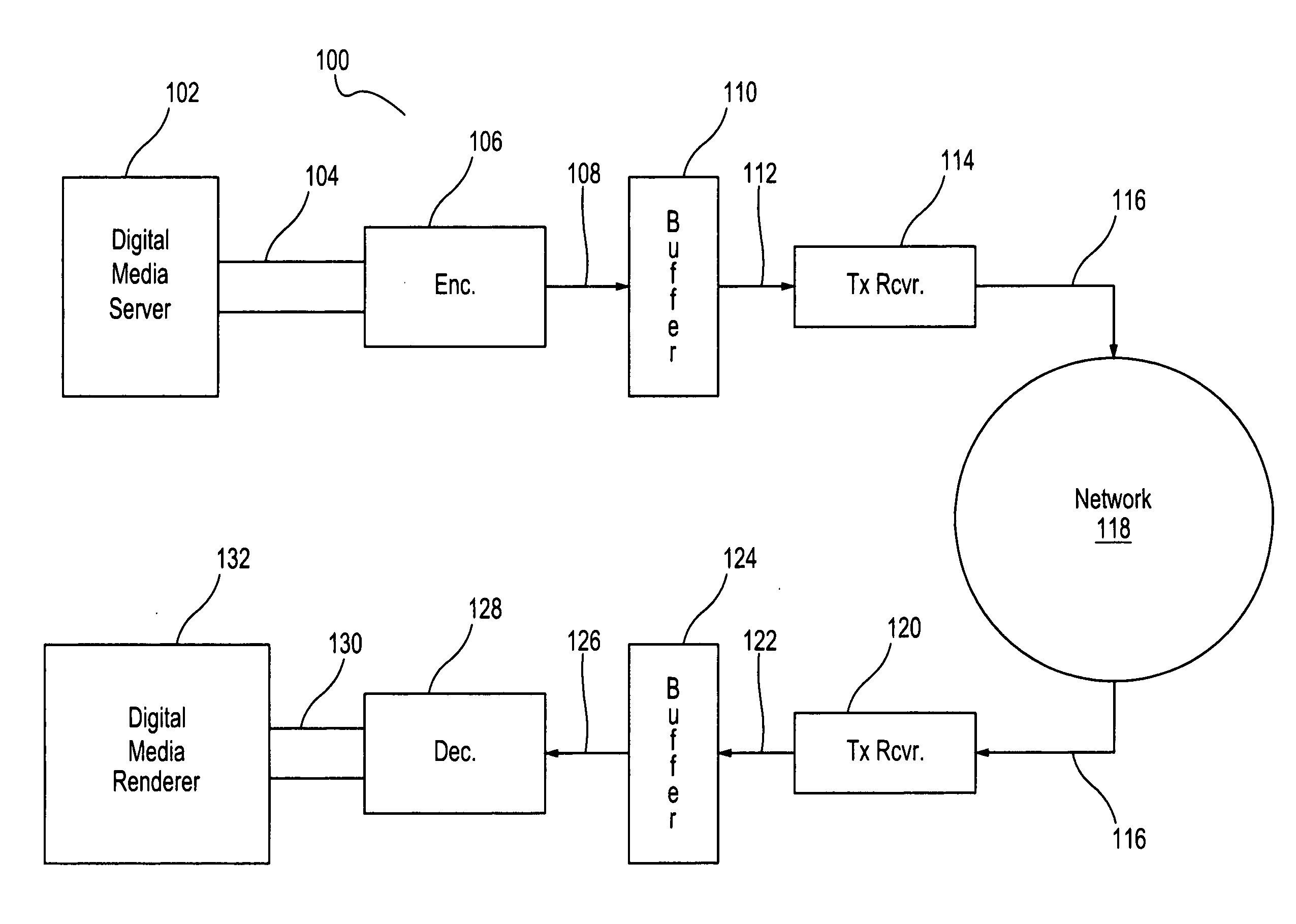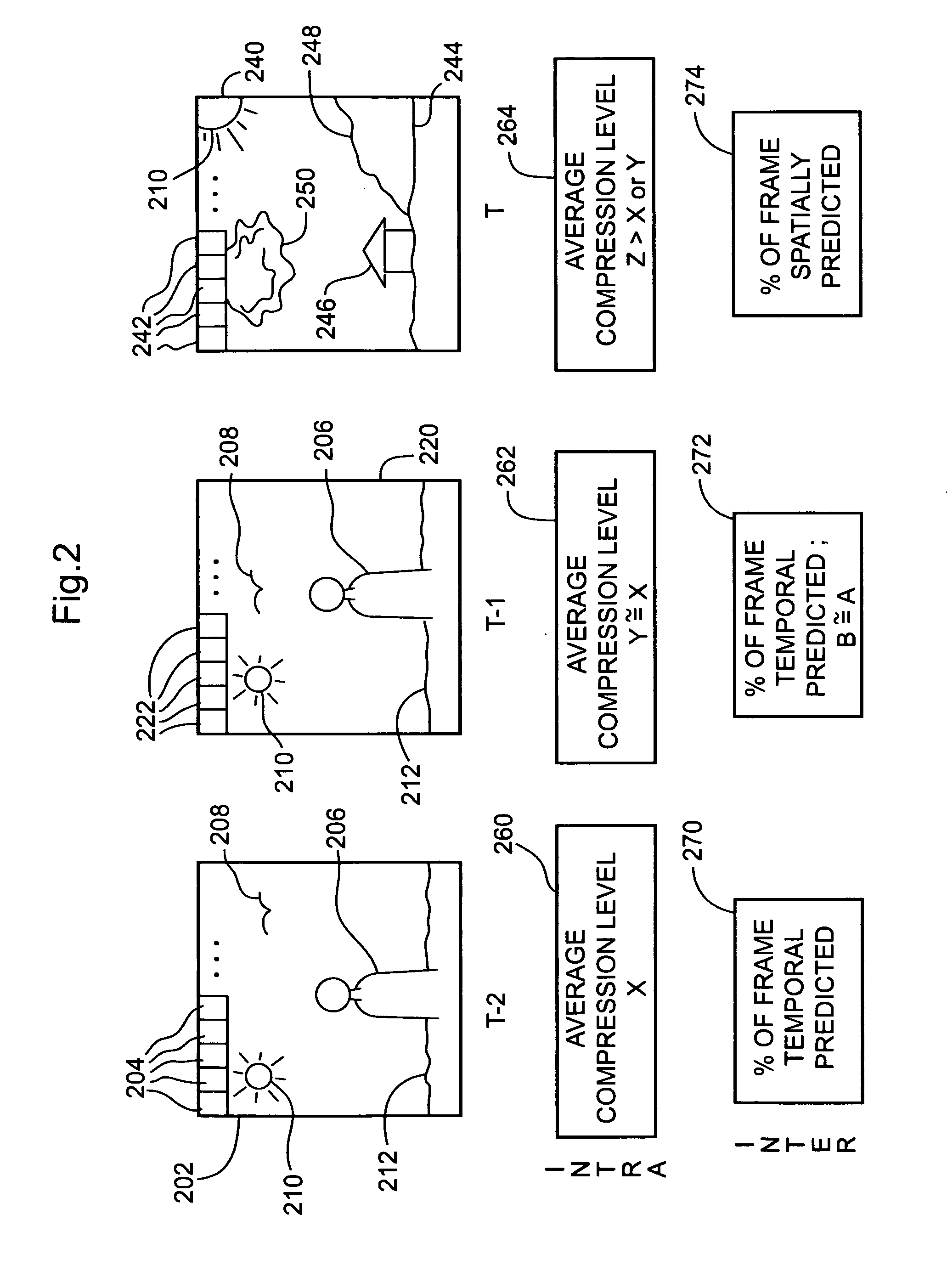Scene change detection for video transmission system
a video transmission system and scene change technology, applied in the field of video transmission systems, can solve the problems of limiting the complexity affecting the quality of the incoming video, and the amount of data is significant, so as to reduce the quality degradation or possible latency and bit rate impacts, detect and minimize the effect of quality degradation
- Summary
- Abstract
- Description
- Claims
- Application Information
AI Technical Summary
Benefits of technology
Problems solved by technology
Method used
Image
Examples
Embodiment Construction
[0019]Aspects of the invention are disclosed in the accompanying description. Alternate embodiments of the present invention and their equivalents are devised without parting from the spirit or scope of the present invention. It should be noted that like elements disclosed below are indicated by like reference numbers in the drawings.
[0020]FIG. 1 depicts a system 100 for transmitting and receiving video signal data according to the disclosed embodiments. System 100 may be any system or collection of devices that connect over a network to share information. System 100, for example, may be a gaming system where video content is generated in the gaming console and then transmitted to a high-definition digital media renderer, such as a flat-screen television. Alternatively, system 100 may be a security monitoring system using high definition (HD) video.
[0021]Digital media server 102 generates the video content to be transmitted. Digital media server 102 may be any device, console, camer...
PUM
 Login to View More
Login to View More Abstract
Description
Claims
Application Information
 Login to View More
Login to View More - R&D
- Intellectual Property
- Life Sciences
- Materials
- Tech Scout
- Unparalleled Data Quality
- Higher Quality Content
- 60% Fewer Hallucinations
Browse by: Latest US Patents, China's latest patents, Technical Efficacy Thesaurus, Application Domain, Technology Topic, Popular Technical Reports.
© 2025 PatSnap. All rights reserved.Legal|Privacy policy|Modern Slavery Act Transparency Statement|Sitemap|About US| Contact US: help@patsnap.com



